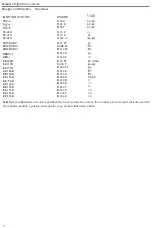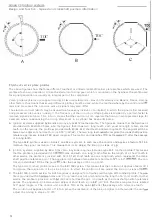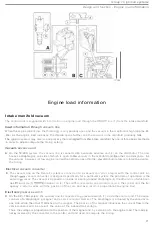
Group
28
Ign
ition sys
tem
s
D
esign
and funct
ion
- Components
2
1
REX-I
General
Since
i
t
is
not technically pract
ic
al to
use
the
control unit
to regulate the relatively h
i
gh
current
in
the
ignition
coil
pri·
mary
,
this function
is
performed by a power
stage
wh
ic
h employs
control
signals from the control unit to vary both
t
he
charging
time
of
the
coil
and
the
instant at which
delivers
i
t
s high-
tens
ion
pulse
.
The
power
stage opens
and
closes
the primary
circuit
,
in
du
cin
g
a high
-
tension voltage in the secondary each
time
the primary
cu
rrent
is
in-
terru
p
t
ed.
Construction
The p
ower stage (1) and
igni
tion
coil
(2)
are assemb
led
by
means of screws (enabling
t
he
units
to
be
r
ep
la
ced
indi
-
vidually)
.
The power s
t
age receives control signa
l
s
from the
uni
t
(g
re
en lead) across
th
e
two
-
pole centre
con
-
nector
(3) (
which
is also
used
to ground
the
signal).
The
thr
ee-pole co
nnector
(
4)
on
the
right
supp
l
ies
the power
stage and igni
t
ion coil wilh battery voltage, grounds
the
coil
and supplies
the rev
counter
with
a signal.
The
connec-
tor
(5)
on
the
left is not used
.
The power
s
tage
(
1
)
i
ncorporates
the
electrical circu
i
ts
which
control
the
primary current
in
the
ignition coil.
Mount
-
ed on a bracket
in
the eng
i
ne
compartment,
the
power
stagelignition
coil
assembly
is
provided with a large contac
t
area with the suspens
ion
strut
hous
i
ng to
ensure
that
the
heat generated is
d
iSSip
ated
.
The
ignition coil (2) is of
the
conv
ent
ion
al type w
i
th a pr
i
mary
and secondary
wir
ing.
The high-tension
induced in
the
secondary
is
fed
to
the distributor from
t
erminal (6).
As on most modern
igni
t
ion
systems
,
the HT
voltage is
of the
order of 30 kV
.
Standing
current
protection
A
functi
on
known
as
's
tand
ing curren
t prote
ction'
is
provided
10 preven
t
overhea
ti
ng of
th
e igni
t
ion coil
when the ig
-
nition
is s
witch
e
d
o
n
with the
en
gine
a
t
rest.
When the
engine is
s
t
opped,
the
control
unit receives no
spee
d
signals
-a
nd
de
l
ive
r
s
a
'low' cont
r
ol signal
to
the power
stage,
whi
ch
responds by
opening
the
p
rimary
circui
t
of
the
1
8
















































